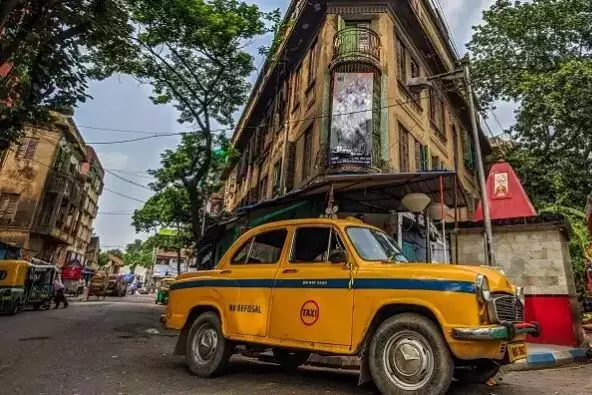Time Traveling from Kolkata's Yellow Cab Nostalgia to the Ola, Uber Era!
The Ambassador taxi is based on the Hindustan Ambassador, an Indian-made car that drew inspiration from the British Morris Oxford series.
image for illustrative purpose

Every city, irrespective of its location, carries its distinct cultural markers, reflecting its identity and character. Consider Delhi's Mughal architecture and delectable street food, Mumbai's dazzling skyline and iconic Marine Drive, or even the globally recognized landmarks like Times Square in New York and the Royal Guard in London. Kolkata, our beloved city, possesses its own unique identifiers, and among these, the cherished yellow taxis hold a special place in our hearts. These taxis aren't just a part of our city's landscape; they have been an indispensable part of our daily lives for generations.
The story behind these iconic yellow taxis is a narrative that speaks of their history and significance. Their inception dates back to 1908, when taxis were introduced in Kolkata, charging a mere 8 annas per mile. However, it wasn't until 1958 that the emblematic yellow Ambassador taxis took center stage. Since then, they have earned the moniker "King of Roads" due to their reliability and resilience.
Often referred to as the "King of Indian Roads," this iconic vehicle has been an integral part of the country's automotive landscape for several decades. Let's delve into the rich history and lasting impact of the Ambassador taxi.
The Ambassador taxi is based on the Hindustan Ambassador, an Indian-made car that drew inspiration from the British Morris Oxford series. Manufactured by Hindustan Motors (HM), the Ambassador was first introduced in the 1950s and quickly became the symbol of Indian automobile culture. Its robust build, spacious interior, and simple yet functional design made it well-suited for use as a taxi.
The Ambassador taxi soon found its way onto the bustling streets of Kolkata, where it became an iconic fixture. The vehicle's reliability, comfortable ride, and easy maintenance made it a popular choice for taxi operators and passengers alike. Its distinctive yellow-and-black livery became synonymous with Kolkata's streetscape.
Surprisingly, the initial fleet of taxis came in two distinct variants: black and yellow. Black taxis catered to intra-city travel, while the yellow ones were designated for journeys beyond the city limits. Over time, the number of black taxis diminished, leaving only the iconic yellow taxis to become synonymous with Kolkata's streets.
Despite their iconic status and deep-rooted history, these taxis are now tinged with nostalgia as their numbers dwindle. The surge in Ola and Uber services has shifted the dynamics of public transportation, causing these taxis to lose their status as the predominant or preferred choice. Consequently, these once-ubiquitous vehicles are now at the risk of fading into the realm of memories, much like an endangered species struggling to survive.
In the heart of Kolkata's ever-evolving urban landscape, these yellow taxis stand as a testament to the city's heritage and the lives they've touched over the years. As we reflect on their journey, it's impossible not to feel a sense of nostalgia for the time when these taxis were not just modes of transport, but a part of the tapestry of our daily existence.

